The share of long products is slated to touch 150 million tons (mt) in the 300-mt target set by the government by 2030 from the present 46 mt. However, while there are enablers like the government’s emphasis on infrastructure development, the key challenges include obsolete technology, high pollution rates and tax evasion in the secondary sector, Vijay Kumar Chama, Executive Vice-President (S&M), Jindal Steel & Power Limited, tells Madhumita Mookerji. Excerpts from an interview:

What is the total share of steel long products in the entire 100-odd million tons of steel produced in India? What is the production of long products by the integrated steel players and secondary players in this basket?
The share of long products is 46 million tons (mt) and in this kitty, the share of integrated steel producers is 16 mt and secondary producers’ share is 30 mt.
India has a target of 300 mt by 2030. What would be the demand for long products in that kitty? What factors are driving the growth of long products in India at present?
The share of long products will be 150 mt in the 300 mt targeted by 2030. The current growth drivers will be the National Highway Authority of India (NHAI), road projects, buildings, railways, ports and housing projects. Thanks to the overall infrastructure push by the government.
Important projects like the railway network expansion and railway electrification, those in the transmission and telecom tower sectors, national and state highways, Bharatmala projects, ports connectivity, Dedicated Freight Corridors (DFCs), Housing for All, the Smart Cities programme, etc will definitely boost long products consumption in the long run and help in growth of this sector.
Experts are betting big on infrastructure development, going forward. So, by how much would this benefit long products growth?
هذه القصة مأخوذة من طبعة January 2018 من Steel Insights.
ابدأ النسخة التجريبية المجانية من Magzter GOLD لمدة 7 أيام للوصول إلى آلاف القصص المتميزة المنسقة وأكثر من 9,000 مجلة وصحيفة.
بالفعل مشترك ? تسجيل الدخول
هذه القصة مأخوذة من طبعة January 2018 من Steel Insights.
ابدأ النسخة التجريبية المجانية من Magzter GOLD لمدة 7 أيام للوصول إلى آلاف القصص المتميزة المنسقة وأكثر من 9,000 مجلة وصحيفة.
بالفعل مشترك? تسجيل الدخول

Steel's Net Zero mission
The country’s commitment to achieving Net Zero within a targeted timeframe will now propel its steel sector towards a sustainable future in line with global trends.
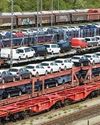
Fuel Price Hike, Supply Chain Disruption Hurt Festive Sales
Supply chain disruptions and fuel price hikes have hurt festive sales in a big way as most auto majors posted decline in sales in October.

Seaborne coking coal offers remain range-bound
Seaborne coking coal offers moved in a narrow range in October amid global supply tightness and healthy spot demand.
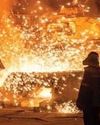
Global crude steel output down 8% in September
China manufactured 74 mt in September, fall of 21% y-o-y while India’s production went up by 7% to 10 mt.
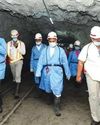
MOIL embarks on expansion projects
“Even though our country is blessed with manganese ore reserves, we import 50% of the domestic requirement. We have to lower our import dependence and save precious foreign exchange.” Ram Chandra Prasad Singh, Steel Minister

Iron ore handled by major ports down 17% in H1
The 12 major Indian ports handled 27 mt of iron-ore during H1 of 2021, down by 17% from 33 mt recorded for the corresponding period of previous year.
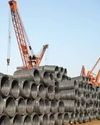
Shrinking China output to boost India exports
“In the third quarter of 2021, the company actively responded to the pressure from external policies, such as production curtailment and dual control system on energy consumption and intensity, as well as coal resource shortage and surging prices.” Baoshan Iron and Steel Co Ltd
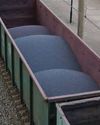
Indian Railways' iron-ore handling up 25% in H1
Indian Railways in April-September of 2021 (H1) transported 84 mt of iron ore, up by 25% over 67 mt during April-September 2020.
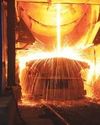
September crude steel production up 7.2% y-o-y
India’s crude steel production in September 2021 grew 7.2 percent to 9.547 million tons (mt) over September 2020 but was down by 3.2 percent from August 2021 output, provisional steel ministry data showed.

“Five enablers: way forward to sustainable cleaner steel”
Right and scalable technology, appropriate policy guidance by government, access to finance to fund transition, willingness of customers to pay for cleaner products and infrastructure for use of new technologies are the need of the hour for the sustainable and cleaner steel industry, according to Madhulika Sharma, Chief Corporate Sustainability, Tata Steel.